 W
WCoffee culture is the set of traditions and social behaviors that surround the consumption of coffee, particularly as a social lubricant. The term also refers to the cultural diffusion and adoption of coffee as a widely consumed stimulant. In the late 20th century, espresso became an increasingly dominant drink contributing to coffee culture, particularly in the Western world and other urbanized centers around the globe.
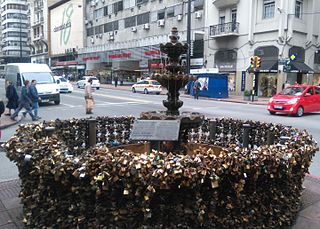 W
WBar Facal is one of the most traditional Uruguayan coffeehouse. Located in the corner 18 de Julio avenue and Yí street, Centro, Montevideo, Uruguay. It was founded in 1882 by Galician Manuel Facal and his brothers. It is the oldest Uruguayan downtown bar.
 W
WA barista is a person, usually a coffeehouse employee, who prepares and serves espresso-based coffee drinks. In Starbucks, over the counter employees are referred to as "baristas", although the preparation process is fully automated.
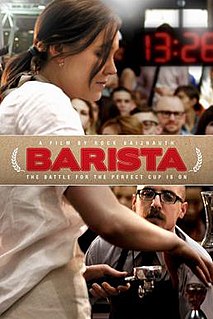 W
WBarista is a 2015 American documentary film directed by Rock Baijnauth. The film follows five baristas, as they prepare for the 2013 United States Barista Championship. It is the first in a series. Viewers are introduced into the elevation of the everyday drink, into a craft culture not unlike that of beer and wine. The film was acquired for distribution by Samuel Goldwyn Films.
 W
WA bikini barista is a woman who prepares and serves coffee beverages while dressed in scanty attire such as a bikini, lingerie, or cropped tops and bikini bottoms or hotpants. In the United States, this marketing trend originated in the Seattle, Washington area in the early 2000s. Similar phenomena have appeared in countries such as Chile and Japan since at least the 1980s.
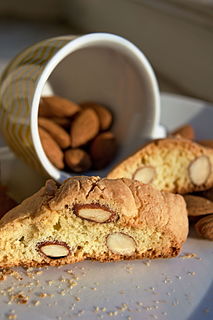 W
WBiscotti, known also as cantucci, are Italian almond biscuits that originated in the Tuscan city of Prato. They are twice-baked, oblong-shaped, dry, crunchy, and may be dipped in a drink, traditionally Vin Santo.
 W
WBlack Gold is a 2006 documentary film that follows the efforts of an Ethiopian coffee-union manager as he travels the world to obtain a better price for his workers' coffee beans. The film was directed and produced by Marc James Francis and Nick Francis from Speakit Films, and co-produced by Christopher Hird. It premiered at the 2006 Sundance Film Festival.
 W
WThe Black Russian is a cocktail of vodka and coffee liqueur. It contains two parts vodka to one part coffee liqueur, per IBA specified ingredients. Traditionally, the drink is made by pouring the vodka over ice cubes or cracked ice in an old-fashioned glass, followed by the coffee liqueur.
 W
WBrewed coffee is made by pouring hot water onto ground coffee beans, then allowing to brew. There are several methods for doing this, including using a filter, a percolator, and a French press. Terms used for the resulting coffee often reflect the method used, such as drip brewed coffee, filtered coffee, pour-over coffee, immersion brewed coffee, or simply coffee. Water seeps through the ground coffee, absorbing its constituent chemical compounds, and then passes through a filter. The used coffee grounds are retained in the filter, while the brewed coffee is collected in a vessel such as a carafe or pot.
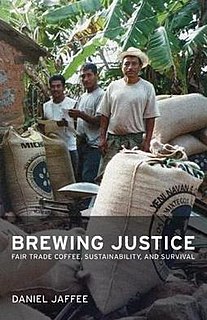 W
WBrewing Justice: Fair Trade Coffee, Sustainability and Survival is a book by American academic Daniel Jaffee.
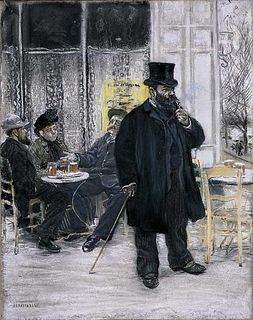 W
WCafé Guerbois, on Avenue de Clichy in Paris, was the site of late 19th-century discussions and planning amongst artists, writers and art lovers – the bohèmes (bohemians), in contrast to the bourgeois.
 W
WThe Canberra Hotel was a temperance hotel on the western corner of Ann and Edward Streets, Brisbane, Queensland, Australia.
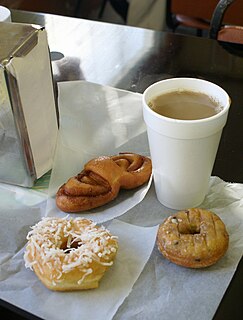 W
WCoffee and doughnuts is a common food and drink pairing in the United States and Canada. The pairing is often consumed as a simple breakfast, and is often consumed in doughnut shops. Coffee is a brewed drink that is typically served hot. Doughnuts are sweet, deep fried desserts. The pairing may also be served and consumed as a refreshment.
 W
WCoffee ceremony of Ethiopia and Eritrea is a core cultural custom in Ethiopia and Eritrea. There is a routine of serving coffee daily, mainly for the purpose of getting together with relatives, neighbors, or other visitors. If coffee is politely declined, then tea will most likely be served.
 W
WIn former Yugoslavia, coffee drinking is an important cultural practice. Coffee culture has a long history, dating back to the Ottoman period. The distinct type of coffeehouse in former Yugoslavia is the kafana, and the traditional form is "Turkish coffee" (unfiltered).
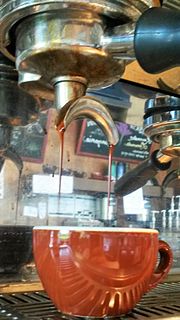 W
WA coffee cup is a container that coffee and espresso-based drinks are served in. Coffee cups are typically made of glazed ceramic, and have a single handle for portability while the beverage is hot. Ceramic construction allows a beverage to be drunk while hot, providing insulation to the beverage, and quickly washed with cold water without fear of breakage, compared to typical glassware.
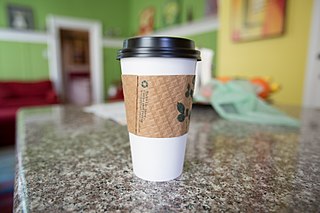 W
WCoffee cup sleeves, also known as coffee sleeves, are roughly cylindrical sleeves that fit tightly over handle-less paper coffee cups to insulate the drinker's hands from hot coffee. Coffee sleeves are typically made of textured paperboard, but can be found made of other materials. Coffee sleeves allow coffee houses, fast food restaurants, and other vendors to avoid double-cupping, the practice of using two nested paper cups for a single hot beverage. Some paper cup holders carry advertisements.
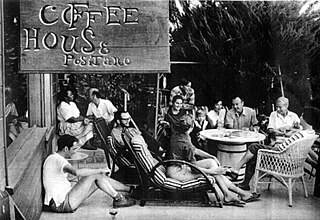 W
WThe Coffee House Positano was a cafe on the southern border of Malibu, California. It was opened in 1957 by Mike Dutton, a radio pioneer, and his wife, Lorees, an aspiring writer. Located on the cliff side of the Pacific Coast Highway on a 140-acre, undeveloped piece of land,. Positano quickly became a success even though there was no sign on the highway to indicate where it was located and the Duttons never advertised its existence. People learned of it strictly by word of mouth. Positano was fundamentally different from the some forty other coffee houses that could be found in the greater Los Angeles area. These places tended to appeal to a young crowd and were generally focused on folk music. particularly folk rock. While Positano offered some of the same things as other coffee houses – exotic coffees, deserts, sandwiches, chess games, a bookstore, poetry readings, and a place to hang out, the Duttons offered an amazing array of other activities – from avant garde theater performances like Picasso’s one-act play, Desire Trapped by the Tail, to a regularly scheduled evenings of political debate with speakers who ranged from communists to John Birchers. Writers, university professors and politicians often spoke about a vast array of topics—like anthropologist Count Taylor on the rise of black identity in the US—or authors such as John Howard Lawson, Lawrence Lipton and Anais Nin, who would read from their new works. Paintings were always on display and for sale. On the days when Positano was closed, various classes like life drawing were taught by artists such as Keith Finch. The jazz and folk music at Positano was spontaneous and free. People simply appeared, play their music and left. For two seasons, Playhouse Positano operated as an open- air theater.
 W
WA coffee palace was an often large and elaborate residential hotel that did not serve alcohol, most of which were built in Australia in the late 19th century.
 W
WThe Coffee Pot in Bedford, Pennsylvania is an example of novelty architecture. The lunch stand was built in the shape of a coffee pot by David Koontz in 1927. It was threatened with demolition in the 1990s, but in 2004 was moved across the street and restored. It currently serves as a gift shop.
 W
WThe Coffee Trader is a historical novel by David Liss, set in 17th-century Amsterdam. The story revolves around the activities of commodity trader Miguel Lienzo, who is a Jewish refugee from the Portuguese Inquisition. Recovering from near financial ruin, he embarks on a coffee trading scheme with a Dutch woman, kept secret because it is forbidden by his community council. Miguel navigates the social structures of the Amsterdam business world, the politics of the council, and the plots of competitors bringing this new import to Europe.
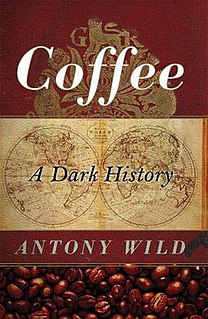 W
WCoffee: A Dark History is a 2005 book that examines the history of coffee. It was written by Antony Wild and was published by Norton. Wild had previously worked as a buyer for a specialty-coffee company for over ten years. He argues that coffee has had major effects on the economy of the British Empire. He also maintains that First World consumption of coffee and the accompanying free trade policies have had a negative impact on Third World coffee farmers.
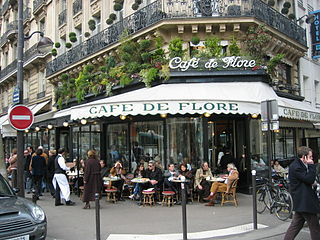 W
WA coffeehouse, coffee shop, or café is an establishment that primarily serves coffee of various types, e.g. espresso, latte, and cappuccino. Some coffeehouses may serve cold drinks, such as iced coffee, iced tea, and other non-caffeinated beverages. In continental Europe, cafés serve alcoholic drinks. A coffeehouse may also serve food, such as light snacks, sandwiches, muffins, fruit, or pastries. Coffeehouses range from owner-operated small businesses to large multinational corporations. Some coffeehouse chains operate on a franchise business model, with numerous branches across various countries around the world.
 W
WParque del Café is a theme park in the department of Quindío, Colombia, 4 km south-west of the town of Montenegro and 11 km west of the departmental capital city Armenia. The park was founded by the National Federation of Coffee Growers of Colombia and the Departmental Committee of Coffee Growers of Quindío, and opened on 24 February 1995. It consists of two main areas: by the main entrance are the buildings housing the museum and exhibitions detailing the history, culture and process of growing and producing coffee in the region; and in the valley beyond is an amusement park with rides and shows. The two areas are linked by two gondola lifts and a chairlift: it is also possible to walk between the two areas via an ecological trail that passes through a plantation of many varieties of coffee bushes.
 W
WA demitasse spoon is a diminutive spoon, smaller than a teaspoon.
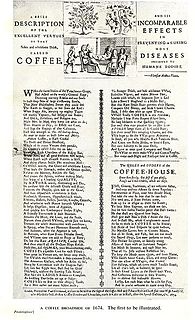 W
WEnglish coffeehouses in the 17th and 18th centuries were public social places where men would meet for conversation and commerce. For the price of a penny, customers purchased a cup of coffee and admission. Travellers introduced coffee as a beverage to England during the mid-17th century; previously it had been consumed mainly for its supposed medicinal properties. Coffeehouses also served tea and hot chocolate as well as a light meal.
 W
WEspresso is a coffee-brewing method of Italian origin, in which a small amount of nearly boiling water is forced under 9–10 bars of pressure (expressed) through finely-ground coffee beans. Espresso coffee can be made with a wide variety of coffee beans and roast degrees. Espresso is the most common way of making coffee in southern Europe, especially in Italy, Spain, Portugal, Switzerland, Southern France, Bulgaria and Greece.
 W
WThe Federal Hotel and Coffee Palace was a large elaborate Second Empire style temperance hotel in the city centre of Melbourne, Victoria, built in 1888 at the height of Melbourne's Boom era, and controversially demolished in 1973. Located on Collins Street, Melbourne's premier thoroughfare, on the corner of King Street, near Spencer Street Station, it is prominent in lists of the buildings Melburnians most regret having lost.
 W
WGreek café culture in Australia is part of the shared history of Greece and Australia. For unskilled penniless Greek migrants, it was a pathway to success in which they created community hubs where Australians socialised. Greek cafés are also a singularly Australian phenomenon: the success of Arthur Comino’s fish shop in Sydney gave rise to a chain migration that saw hundreds of Greek migrants open oyster saloons across the country by 1900. Adapting to market changes and food trends, Greek proprietors went on to run fish shops, fruit shops, ice cream parlours, sundae shops, milk bars, snack bars, confectioneries, and cafés that dotted the Australian landscape for much of the twentieth century.
 W
WHabesha kemis is the traditional attire of Habesha women.
 W
WInternational Coffee Day is an occasion that is used to promote and celebrate coffee as a beverage, with events now occurring in places across the world. The first official date was 1 October 2015, as agreed by then International Coffee Organization and was launched in Milan. This day is also used to promote fair trade coffee and to raise awareness for the plight of the coffee growers. On this day, many businesses offer free or discounted cups of coffee. Some businesses share coupons and special deals with their loyal followers via social networking. Some greeting card companies sell National Coffee Day greeting cards as well as free e-cards.
 W
WAn Internet café is a café that provides Internet access to the public. The fee for using a computer is generally charged as a time-based rate. The first Internet café was opened in South Korea.
 W
WKafana / kavana / kahvana ; kafene\kafeneja, kafeana, kavarna ; are terms used in most former Yugoslav countries and Albania for a distinct type of local bistro which primarily serves alcoholic beverages and coffee, and often also light snacks (meze) and other food. Many kafanas feature live music performances.
 W
WLatte art is a method of preparing coffee created by pouring microfoam into a shot of espresso and resulting in a pattern or design on the surface of the latte. It can also be created or embellished by simply "drawing" in the top layer of foam. Latte art is particularly difficult to create consistently, due to the demanding conditions required of both the espresso shot and milk. This, in turn, is limited by the experience of the barista and quality of the espresso machine. The pour itself, then, becomes the last challenge for the latte artist. The term is not limited to latte coffee but also applies to other beverages containing milk foam, such as cappuccino and hot chocolate.
 W
WA mug is a type of cup typically used for drinking hot drinks, such as coffee, hot chocolate, or tea. Mugs usually have handles and hold a larger amount of fluid than other types of cup. Typically, a mug holds approximately 240–350 ml of liquid. A mug is a less formal style of drink container and is not usually used in formal place settings, where a teacup or coffee cup is preferred. Shaving mugs are used to assist in wet shaving.
 W
WThe People's Palace is a heritage-listed building and a former temperance hotel in the Brisbane CBD, City of Brisbane, Queensland, Australia. It is located at 308 Edward Street on the southern corner with Ann Street, diagonally opposite to Brisbane's Central Railway Station. It was designed by Colonel Saunders and built from 1910 to 1911. It was added to the Queensland Heritage Register on 21 October 1992.
 W
WSchweigt stille, plaudert nicht, BWV 211, also known as the Coffee Cantata, is a secular cantata by Johann Sebastian Bach. He composed it probably between 1732 and 1735. Although classified as a cantata, it is essentially a miniature comic opera. In a satirical commentary, the cantata amusingly tells of an addiction to coffee.
 W
WSeattle is regarded as a world center for coffee roasting and coffee supply chain management. Related to this, many of the city's inhabitants are coffee enthusiasts; the city is known for its prominent coffee culture and numerous coffeehouses.
 W
WSelva Negra Mountain Resort and Coffee Estate is a historical coffee farm founded in 1891 by German immigrants. Since 1976 it has also been a tourist resort. It is located in the department of Matagalpa, Nicaragua, just 11 kilometres (7 mi) from the city of Matagalpa. According to Fodor's, Selva Negra is "arguably Nicaragua's most famous hotel," and proprietor Eddy Kühl is "a personal friend of many of the country's power brokers."
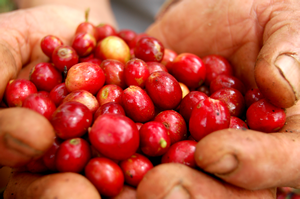 W
WThe term third wave coffee is a label given to coffee businesses opened after the year 2000, which share a similar mission statement or goal: to deliver high-quality coffee. Those who subscribe to the third wave coffee movement consider coffee an artisanal food, like wine, the consumption of which can be enhanced with greater education, connoisseurship, and sensory exploration beyond just a cup of coffee. Third wave coffee seeks to highlight the unique characteristics that result from the interactions between the coffee's source cultivar, growing and cultivation methods, processing methods, roasting methods, and the various ways to prepare coffee.
 W
WTufahije is a Bosnian dessert made of walnut-stuffed apples poached in sugar water. It is very popular in Bosnia and Herzegovina, Serbia, North Macedonia and Croatia.
 W
WTurkish coffee is a style of coffee prepared in a cezve using very finely ground coffee beans without filtering.
 W
WA White Russian is a cocktail made with vodka, coffee liqueur and cream served with ice in an old fashioned glass. Often milk, half and half, or cream liqueur will be used as an alternative to cream.
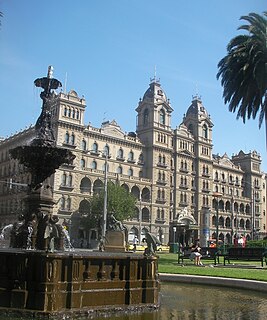 W
WThe Hotel Windsor is a luxury hotel in Melbourne, Victoria, Australia. Opened in 1884, the Windsor is notable for being Melbourne's only surviving purpose-built "grand" Victorian era hotel.